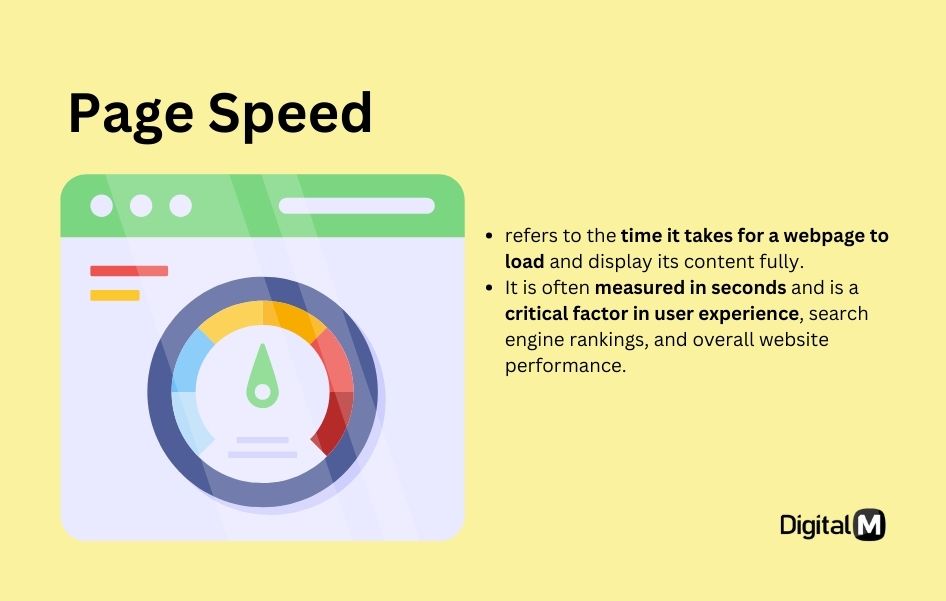Page Speed
Page speed refers to the time it takes for a webpage to load and display its content fully. It is often measured in seconds and is a critical factor in user experience, search engine rankings, and overall website performance.
Page speed is like the time it takes for a webpage to open after you click on a link. Faster page speed means quicker access to information.

Key Points:
Loading Time: Page speed is primarily concerned with how quickly a webpage loads from the moment a user clicks on a link or enters a URL.
User Experience: Faster page speed contributes to a better user experience, reducing waiting time for visitors.
Factors Affecting Page Speed:
File Size: The size of images, scripts, and other files on a webpage.
Server Response Time: The time it takes for a web server to respond to a request.
Browser Rendering: The time it takes for a browser to render and display the content.
Measuring Page Speed:
Load Time: The time it takes for a webpage to be fully loaded.
First Contentful Paint (FCP): The time it takes for the first content to appear on the screen.
Time to Interactive (TTI): The time it takes for a webpage to become fully interactive and responsive to user input.
Importance:
User Retention: Users are more likely to stay and engage with a website that loads quickly.
SEO Impact: Search engines, like Google, consider page speed as a ranking factor. Faster-loading pages may rank higher in search results.
Conversion Rates: Page speed can impact conversion rates, as users are more likely to complete desired actions on a faster website.
Improvement Strategies:
Optimize Images: Compress and properly format images to reduce file sizes.
Minify Code: Remove unnecessary characters and spaces from HTML, CSS, and JavaScript files.
Browser Caching: Enable caching to store previously loaded resources locally, reducing load times for returning visitors.
Tools for Evaluation:
Tools like Google PageSpeed Insights, Lighthouse, and GTmetrix provide insights into a website’s page speed performance.
Example:
A website that loads in 2 seconds is considered to have good page speed, while one that takes 10 seconds might be considered slow.
Why it Matters:
User Satisfaction: Faster page speed contributes to a positive user experience and satisfaction.
SEO Ranking: Search engines prioritize faster-loading websites, impacting their rankings.
Competitive Advantage: Websites with quicker load times may have a competitive edge, especially in industries where user attention is fleeting.
In summary, page speed is the time it takes for a webpage to load and is a crucial factor in user experience, search engine rankings, and overall website success. Optimizing page speed involves various strategies to reduce load times and improve the overall performance of a website.

